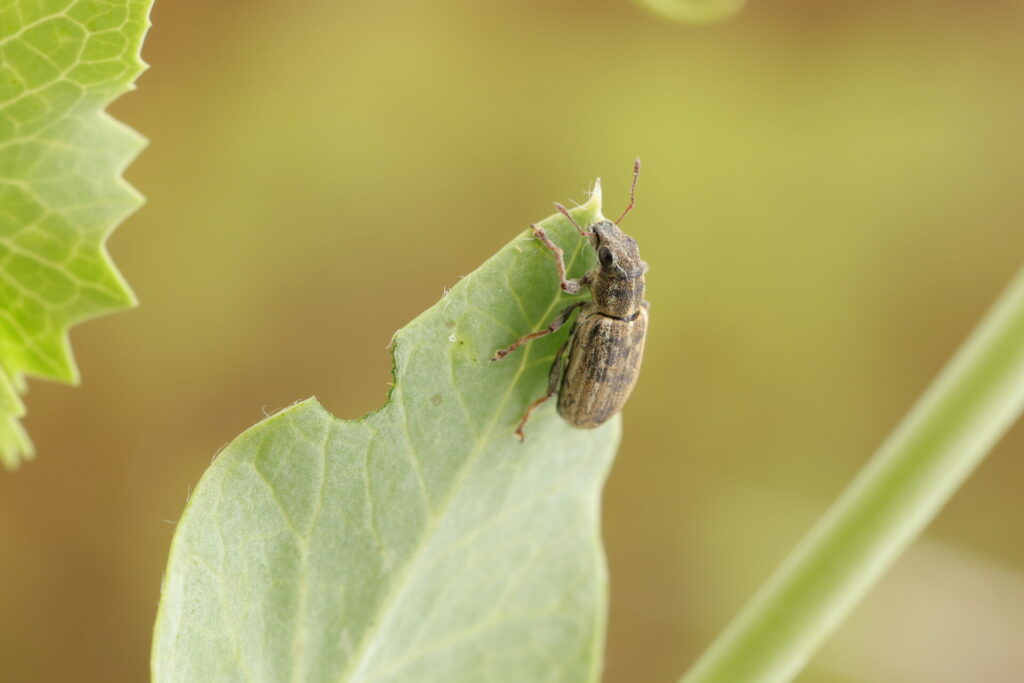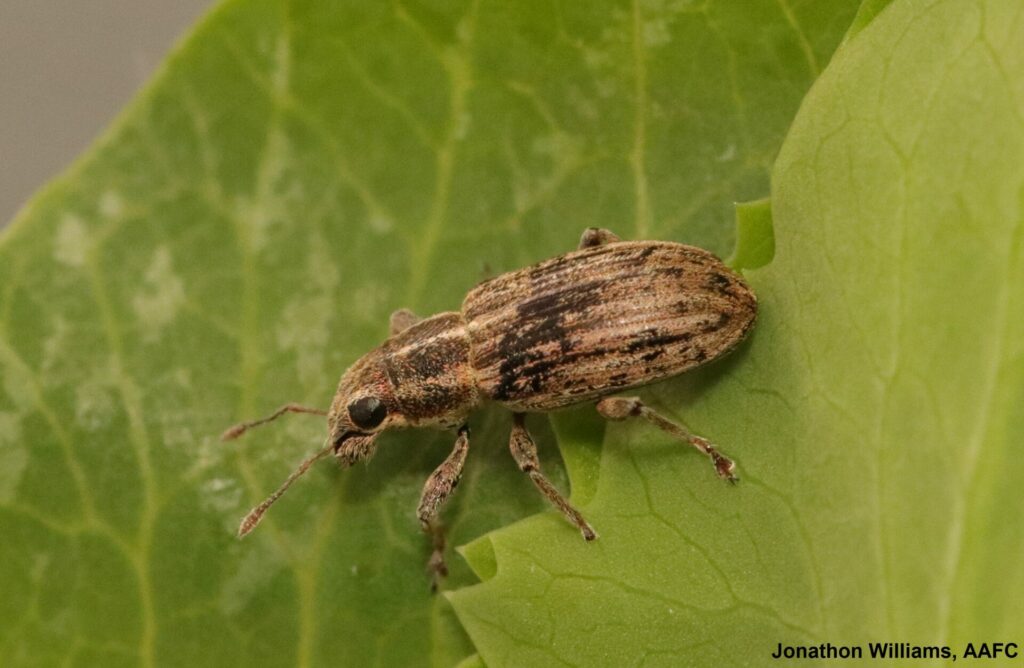The pea leaf weevil is now present in Alberta, Saskatchewan, and Manitoba. Learn more about the biology of the pea leaf weevil here and about its distribution across western Canada here.

This insect causes damage to field pea and faba bean crops during the adult stage and during larval development. Adult pea leaf weevil eat the foliage of their host plants, leaving ‘u’-shaped notches along the edge of the leaves.
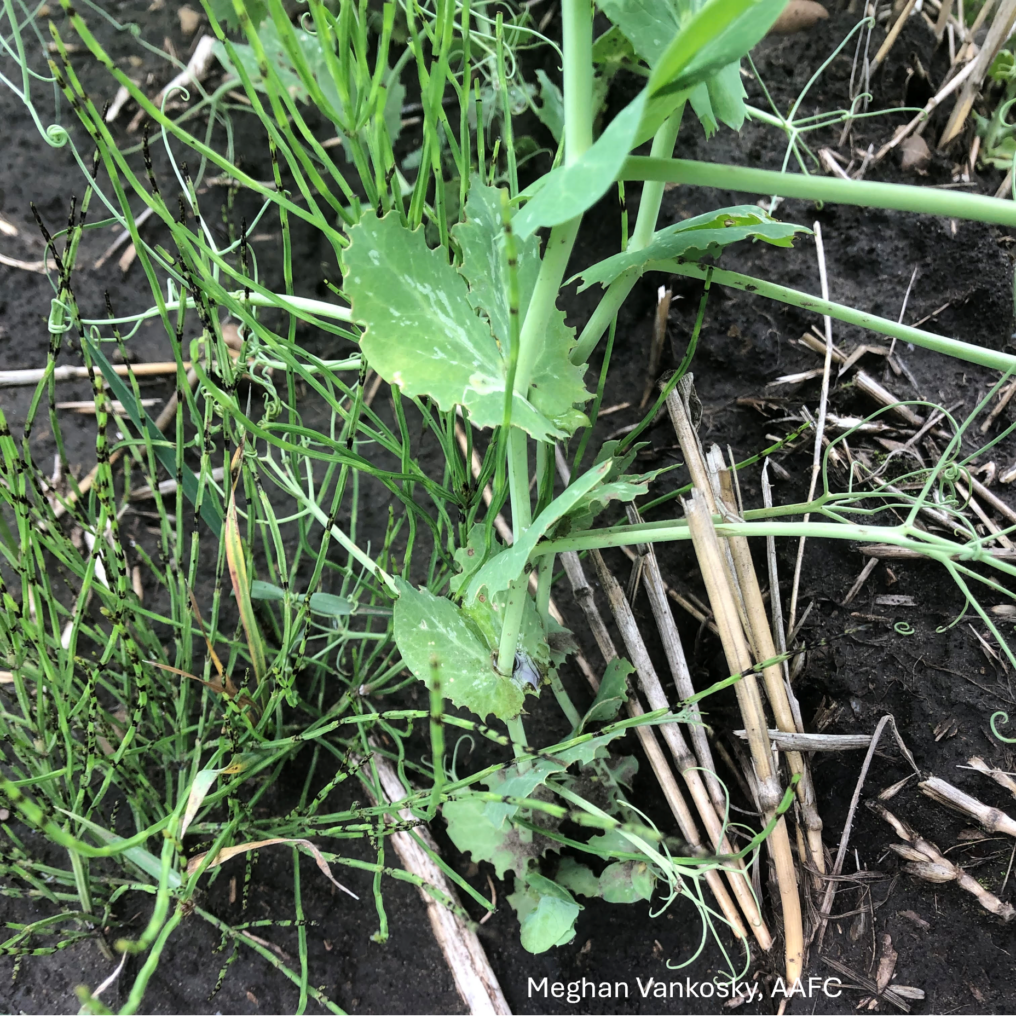
Adult pea leaf weevil will also feed on a variety of other legume and pulse crops, including alfalfa, chickpea, and soybean. Most adult feeding on these hosts takes place in early spring before pea and faba seedlings emerge, and again after peas and fabas have been harvested in summer and early fall.
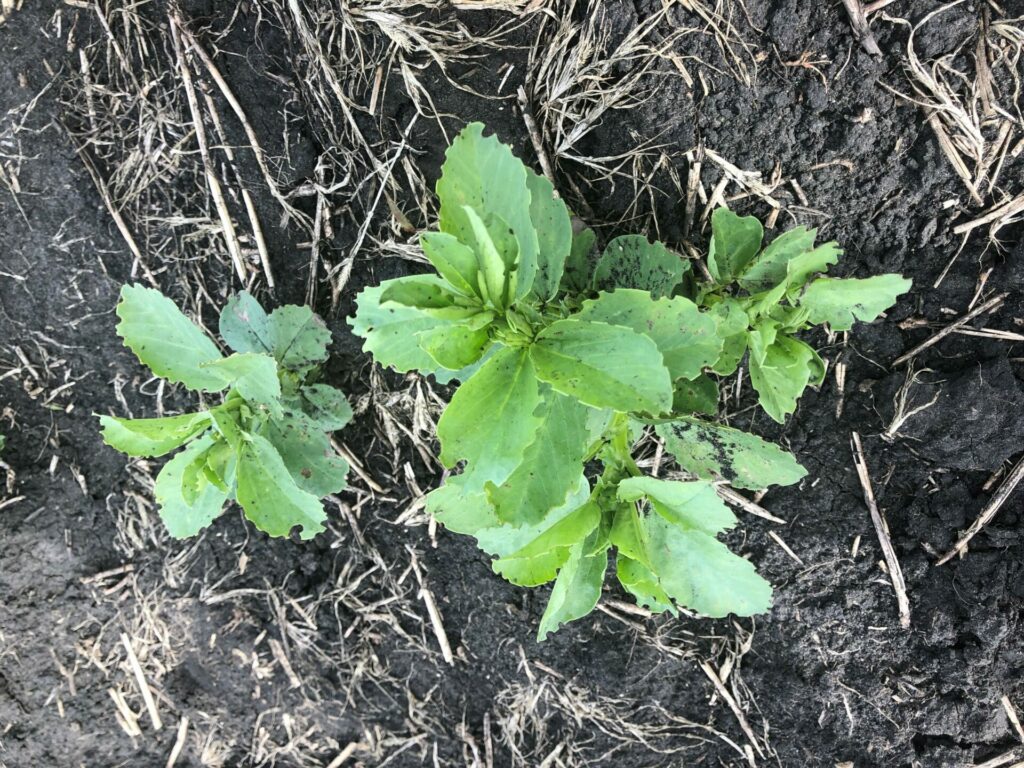
Pea leaf weevil larvae damage the nitrogen-fixing root nodules on field pea and faba bean plants.
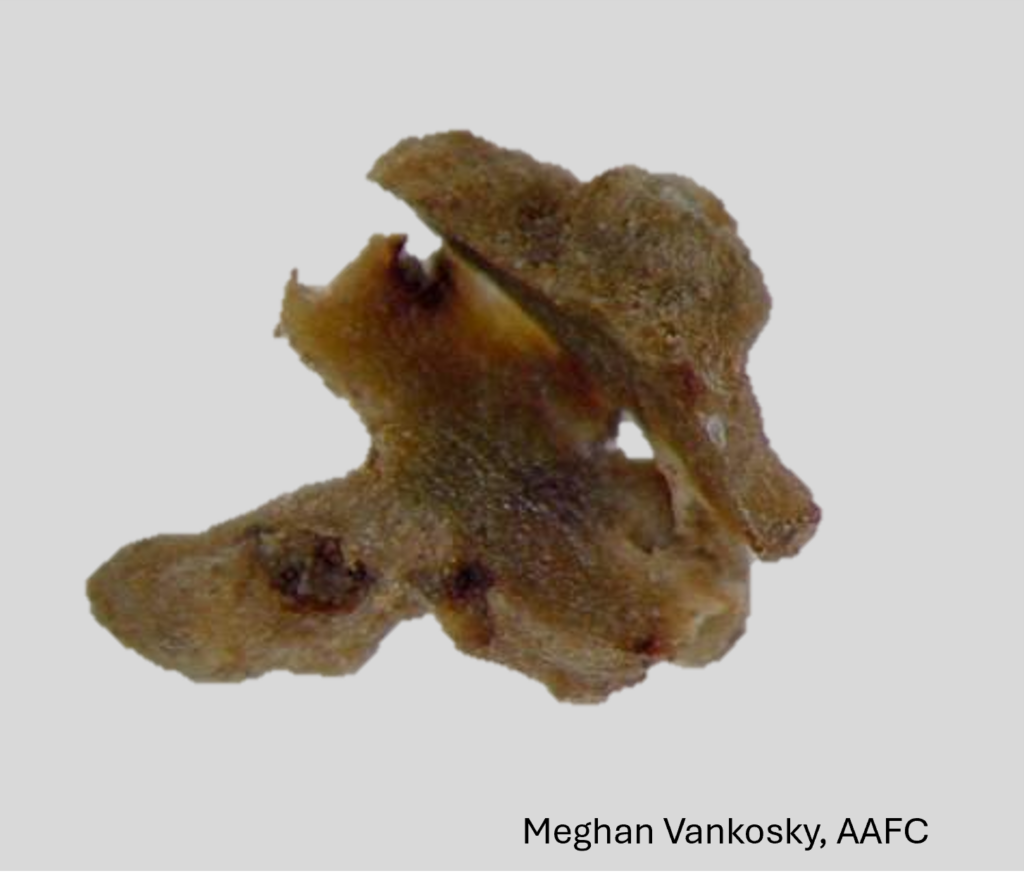
Biological and monitoring information related to pea leaf weevil in field crops is posted by the province of Alberta and in the PPMN monitoring protocol. Also access the pea leaf weevil page from the Field Crop and Forage Pests and their Natural Enemies in Western Canada: Identification and Management field guide. (en français : Guide d’identification des ravageurs des grandes cultures et des cultures fourragères et de leurs ennemis naturels et mesures de lutte applicables à l’Ouest canadien).

